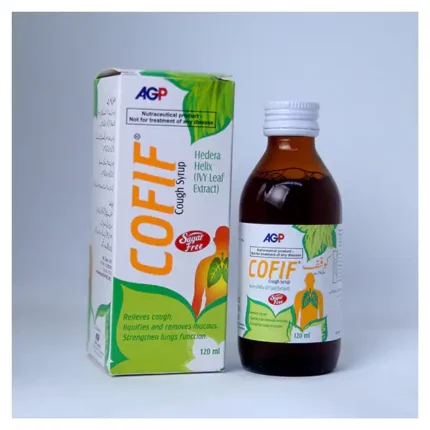Poze is an oral antidiabetic tablet commonly available in Pakistani pharmacies, from major cities like Lahore and Karachi to clinics in smaller towns, used to help manage type 2 diabetes when diet and exercise aren’t enough. It’s a thiazolidinedione (glitazone) that improves insulin sensitivity. This profile covers its essentials—how it works, uses, dosing, side effects, and doctor insights—based on local standards like those from the Pakistan Medical and Dental Council (PMDC). It’s straightforward info to understand, not a reason to start without a doctor’s guidance.
Ingredients
- Active Ingredient: Pioglitazone hydrochloride equivalent to pioglitazone (15 mg, 30 mg, or 45 mg per tablet).
- Excipients: May include lactose, microcrystalline cellulose, or magnesium stearate (check packaging for specifics).
Drug Class
Thiazolidinedione (Glitazone) / Oral Antidiabetic.
How It Functions
Pioglitazone activates PPAR-gamma receptors, decreasing insulin resistance in muscle and fat tissues while inhibiting liver gluconeogenesis. This lowers blood glucose, reduces insulin levels, and improves glycemic control without stimulating insulin release. In Pakistan’s diabetes clinics, it’s valued for monotherapy or combos when metformin or sulfonylureas fall short, especially in insulin-resistant patients common in South Asian populations.
Common Applications
From local guidelines, Poze is indicated for:
- Type 2 diabetes mellitus (non-insulin dependent) as adjunct to diet and exercise.
- Monotherapy when single-agent control fails.
- Combination with sulfonylureas, metformin, or insulin for better glycemic management.
Dosage Form
Tablet, swallowed whole with water, once daily with or without meals (avoid skipping meals to prevent hypoglycemia).
Dosage Guidelines
- Monotherapy: Start 15-30 mg once daily; increase to 45 mg if needed for non-responders.
- Combination:
- With sulfonylureas: 15-30 mg; adjust sulfonylurea if hypoglycemic.
- With metformin: 15-30 mg; effective regardless of metformin dose.
- With insulin: 15-30 mg; reduce insulin 10-25% if glucose <100 mg/dL; start 15 mg if high hypoglycemia risk.
- Maximum: 45 mg once daily; titrate based on response.
Potential Side Effects
Common issues include:
- Weight gain or edema (fluid retention).
- Hypoglycemia (especially in combos).
- Headache, muscle pain, or anemia.
- Rare: Heart failure worsening, liver enzyme elevation, or bone fractures.
Seek help for swelling, shortness of breath, or jaundice.
Key Warnings and Precautions
PMDC-aligned notes:
- Heart Failure: Avoid or use cautiously in NYHA Class III/IV; monitor for edema.
- Bladder Cancer: Possible risk—discuss history.
- Pregnancy/Lactation: Not recommended; consult for alternatives.
- Liver: Monitor enzymes; discontinue if elevated.
- Driving: Safe unless hypoglycemic or dizzy.
- Alcohol: Limit; may affect glucose.
- Meals: Don’t skip to avoid lows.
Regular HbA1c, liver, and heart checks advised.
When It’s Not Suitable (Contraindications)
Avoid if:
- Type 1 diabetes or diabetic ketoacidosis.
- Severe heart failure (NYHA III/IV).
- Active bladder cancer or history.
- Severe liver impairment.
- Allergy to pioglitazone or thiazolidinediones.
Drug Interactions
- Insulin/sulfonylureas: Increased hypoglycemia.
- Rifampin: Reduces pioglitazone levels.
- Oral contraceptives: May alter effects.
- Gemfibrozil: Raises pioglitazone levels.
Food Interactions
- Take with/without food; consistent timing helps.
- Avoid excessive carbs/alcohol to stabilize glucose.
In Case of Overdose
Hypoglycemia or lactic acidosis-like symptoms—treat with glucose; monitor vitals in ER.
Missed Dose
Take as soon as remembered unless near next; skip then, don’t double.
Storage and Disposal
Store at room temperature (15-30°C), dry place, away from light/moisture/kids. Pharmacy disposal for expired.
Quick Tips
- Once daily; monitor weight for edema.
- Combine with diet/exercise for best results.
- Regular HbA1c checks every 3 months.
Doctor Review
Endocrinologists in Pakistan, from Aga Khan in Karachi to diabetes centers in Lahore, view Poze as a useful insulin sensitizer for type 2 diabetes, especially in combos, improving control without hypo risk alone, but caution heart failure monitoring and bladder cancer screening given regional risks.
Laboratory Screening
- HbA1c: Glycemic control.
- Liver Enzymes: ALT/AST baseline and periodic.
- Lipids/Renal: For metabolic effects.
- Echo: If heart failure risk.
FAQs
What is Poze for? Type 2 diabetes management via insulin sensitization.
Dosing? 15-45 mg daily; titrate per response.
Safe in pregnancy? No; consult alternatives.
This profile outlines Poze’s role in Pakistan’s diabetes care—informational, not prescriptive.
Disclaimer: Product info only, not prescription. Consult Pakistani doctor for suitability. Seek care for edema or hypo symptoms.









Reviews
There are no reviews yet.